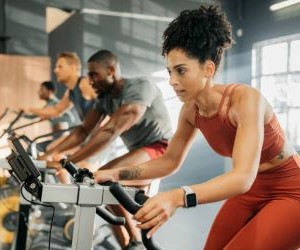Master endurance cycling in tropical climates with effective strategies. Learn hydration, heat adaptation, and training tips for peak performance.
WHAT ARE THE BEST TOOLS TO MEASURE CYCLING PERFORMANCE?
Cyclists today have access to a wealth of technology designed to quantify and enhance performance. From classic heart rate monitors to advanced power meters and AI-driven apps, these tools help riders measure progress, set training zones, and optimize results. But with so many options, it’s easy to feel overwhelmed. Which tools are essential, and which are nice-to-have extras? This article breaks down the best tools for measuring cycling performance, analyzing their functions, benefits, and integration. Whether you’re a weekend rider or a racer, these insights will help you choose the right setup to elevate your cycling journey.

Power meters and heart rate monitors
When it comes to measuring cycling performance, two tools dominate the conversation: power meters and heart rate monitors. Together, they form the foundation for objective training, allowing riders to balance effort and recovery with precision. Both offer unique insights that, when combined, provide a full picture of fitness and fatigue.
Power meters: the gold standard
Power meters measure the force a cyclist applies to the pedals in watts, making them the most direct and reliable indicator of performance. Unlike speed, which is influenced by wind or gradient, power reveals true output. This allows riders to train within specific zones, manage pacing on climbs, and track improvements over time. Modern power meters come in crank-based, pedal-based, or hub-based systems, offering options for different budgets and bike setups.
Heart rate monitors: essential context
Heart rate monitors measure physiological response rather than output. They reveal how hard the body is working relative to exertion. While less precise than power, heart rate adds context: fatigue, hydration, and stress all influence beats per minute. Using heart rate in tandem with power helps cyclists identify when their body is under strain beyond what the numbers suggest, preventing overtraining.
Power meters track actual output in watts.
Heart rate monitors show body response to effort.
Combining both offers the clearest performance picture.
Training zones become more precise with dual data.
Together, these tools anchor modern cycling training, turning rides into structured sessions rather than guesswork.
GPS devices and cycling computers
Beyond effort measurement, tracking performance also relies on navigation and data logging. GPS-enabled cycling computers have become standard for both amateurs and pros, offering detailed ride analysis, mapping, and real-time metrics. They transform the handlebars into a cockpit of information.
Cycling computers as training partners
Cycling computers like Garmin, Wahoo, and Bryton display metrics such as speed, cadence, elevation, and gradient in real time. Paired with sensors, they integrate heart rate and power data, providing a complete training dashboard. Navigation functions allow riders to follow routes, reroute on the fly, and explore unfamiliar terrain without fear of getting lost.
The value of GPS tracking
GPS tracking enables post-ride analysis, syncing with platforms like Strava or TrainingPeaks. This data reveals performance trends, personal bests, and areas for improvement. Elevation profiles, time-in-zone analysis, and route heatmaps all provide insights into training load and efficiency. For event preparation, GPS logs help replicate race conditions and refine pacing strategies.
GPS computers provide real-time ride metrics.
Integrated with power and heart rate for complete analysis.
Navigation ensures confident exploration.
Data sync enables trend tracking and sharing.
With these devices, cyclists go beyond “how it felt” and build detailed ride logs that support long-term performance growth.
Apps, wearables, and recovery tools
The final layer of performance measurement involves digital ecosystems and recovery insights. Apps, wearables, and recovery tools translate raw data into actionable strategies, helping cyclists avoid burnout and maximize gains. In modern training, performance is as much about managing recovery as it is about pushing effort.
Apps and training platforms
Apps like Strava, TrainingPeaks, and Zwift connect devices and provide analytics, training plans, and community features. Strava emphasizes social motivation, while TrainingPeaks specializes in structured training with metrics like TSS (Training Stress Score). Zwift gamifies indoor training, combining power data with virtual rides to make workouts engaging.
Wearables and recovery trackers
Wearables like WHOOP and Garmin watches track HRV (heart rate variability), sleep, and stress, offering insights into recovery status. This helps cyclists decide when to push hard and when to rest. Foam rollers, massage guns, and smart trainers also contribute indirectly by supporting recovery and indoor consistency.
Apps provide structured training insights and social motivation.
Wearables track recovery readiness via HRV and sleep data.
Smart trainers deliver accurate indoor power measurements.
Recovery tools support sustainable long-term training.
Integration is key
The best performance measurement comes from integrating these tools. Power meters show what you produce, heart rate monitors show how your body reacts, GPS computers record and display the effort, and apps interpret the big picture. Recovery tools ensure adaptation happens, preventing plateaus. Together, they transform cycling into a data-driven, yet human-centered pursuit of progress.
In conclusion, the best tools to measure cycling performance combine accuracy, usability, and integration. Power meters and heart rate monitors anchor the data, GPS computers provide the interface, and apps and recovery tools translate numbers into strategy. For cyclists aiming to unlock their full potential, the right toolkit ensures every pedal stroke is measured, understood, and improved.
YOU MAY ALSO BE INTERESTED






